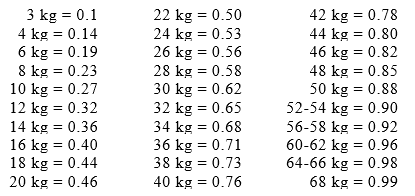Regulatory Information
HSA regulatory responsibility and product classification details
Regulatory Responsibility
Product Classification
Formulation Information
SOLUTION
**4.2 Posology and Method of Administration** Sodium pertechnetate (99mTc) is normally administered intravenously at activities which vary widely according to the clinical information required and the equipment employed. Other activities may be justifiable. It should be noted that in each country physicians should follow the Diagnostic Reference Levels and the rules set out by local law. Pre-treatment of patients with thyroid blocking agents or reducing agents may be necessary for certain indications. Recommended activities are as follows: _Adults and the elderly:_ - Thyroid scintigraphy: 18.5–80 MBq (0.5 – 2.2 mCi) Scintigraphy performed 20 minutes after intravenous injection. - Salivary gland scintigraphy: 40 MBq (1.1 mCi) Scintigraphy performed immediately after intravenous injection and at regular intervals up to 15 minutes. - Meckel's diverticulum scintigraphy: 400 MBq (10.8 mCi) Scintigraphy performed immediately after intravenous injection and at regular intervals up to 30 minutes. - Brain scintigraphy: 370–800 MBq (10 – 22 mCi) Rapid sequential images are taken immediately within the first minute after intravenous administration; static images 1 to 4 hours later. Thyroid and choroid plexus should be blocked to avoid non-specific 99mTc uptake. - Cardiac and vascular scintigraphy: 740–925 MBq (20 – 25 mCi) Red cells are labelled in-vivo or in-vitro by pretreating with a reducing agent. Dynamic images are taken in the first minute after intravenous administration, followed by regular images over 30 minutes. - Gastrointestinal bleeding: 740–925 MBq (20 – 25 mCi) Red cells are labelled in vivo or in vitro by pretreating with a reducing agent. Dynamic images are taken in the first minute after intravenous administration, followed by regular images at appropriate intervals for up to 24 hours. - Lacrimal dust scintigraphy: 2–4 MBq each eye (0.05 – 0.11 mCi) Drops are instilled into the eye and dynamic images are taken over 2 minutes, followed by static images at appropriate intervals over 20 minutes. _Children:_ The activity for administration to children may be calculated from the recommended range of adult activity and adjusted according to body weight or surface area. However, the Paediatric Task Group of EANM recommends that the activity to be administered to a child should be calculated from the body weight according to the following table: Fraction of adult dose:  In very young children (up to 1 year) a minimum dose of 20 MBq (10 MBq in thyroid scintigraphy) for direct administration or 80 MBq for red blood cell labelling is necessary in order to obtain images of sufficient quality.
INTRAVENOUS
Medical Information
**4.1 Therapeutic Indications** This medicinal product is for diagnostic use only. The eluate from the generator (Sodium Pertechnetate (99mTc) Injection Ph. Eur.) may be used as a reagent for labelling of various carrier compounds supplied as kits or administered directly in-vivo. 1. When administered intravenously, the sterile sodium pertechnetate (99mTc) solution is used as a diagnostic aid in the following: - **Thyroid scintigraphy:** direct imaging and measurement of thyroid uptake to give information on the size, position, nodularity and function of the gland in thyroid disease. - **Salivary gland scintigraphy:** to assess salivary gland function and duct patency. - **Location of ectopic gastric mucosa:** Meckel's diverticulum. - **Cerebral scintigraphy:** to identify breaches in the blood-brain barrier caused by tumour, infarction, haemorrhage and oedema, when no other methods are available. 2. When used in conjunction with pre-treatment with a reducing agent to effect technetium (99mTc)-labelling of red blood cells: - **Cardiac and vascular scintigraphy** - angiocardioscintigraphy for: ✽ evaluation of ventricular ejection fraction ✽ evaluation of global and regional cardiac wall motion ✽ myocardial phase imaging - organ perfusion or vascular abnormalities imaging - **Diagnosis and localisation of occult gastrointestinal bleeding.** 3. Following instillation of sterile sodium pertechnetate (99mTc) solution into the eye: - **Lacrimal duct scintigraphy:** to assess patency of tear ducts
**4.3 Contraindications** Hypersensitivity to the active substance or any of the excipients.
V09FX01
technetium (99mTc) pertechnetate
Manufacturer Information
QT INSTRUMENTS (S) PTE LTD
Curium Netherlands B.V.
Fresenius Kabi Austria GmbH (Eluent - NaCl 0.9%)
Active Ingredients
Sodium Molybdate (99Mo)
2.15, 4.3, 6.45, 8.6, 10.75, 12.9, 17.2, 21.5, 25.8, 30.1, 34.4, 43 (GBq)
Sodium pertechnetate (99mTc)
2.08,4.16,6.24,8.32,10.4,12.47,16.63,20.79,24.95,29.11,33.26,41.58 (Gbq)
Documents
Package Inserts
08 CON 4329 Singapore SPC 15052019_clean.doc
Approved: July 28, 2020
